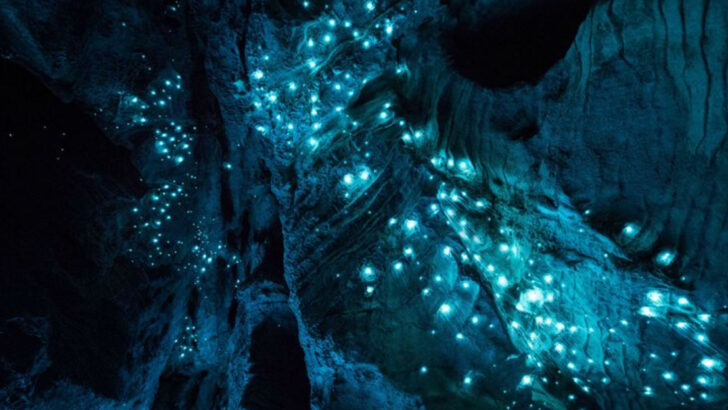Caves are home to some of the strangest creatures on Earth, and trust us, you won’t believe what’s lurking in the dark. These mysterious underground worlds are more than just rocks and shadows—they’re filled with animals that have evolved in the most bizarre and fascinating ways.
In total darkness, where survival is a game of adaptation, animals have lost eyes, developed eerie abilities, and created entire ecosystems that thrive without sunlight. Think of blind fish that swim in pitch-black waters or glowing insects that light up the underground like stars.
These caves are a world all their own, and the creatures living in them are pushing the limits of what we thought was possible. Get ready to meet 22 of the most bizarre and mesmerizing animals that have mastered life in the dark.
Olm
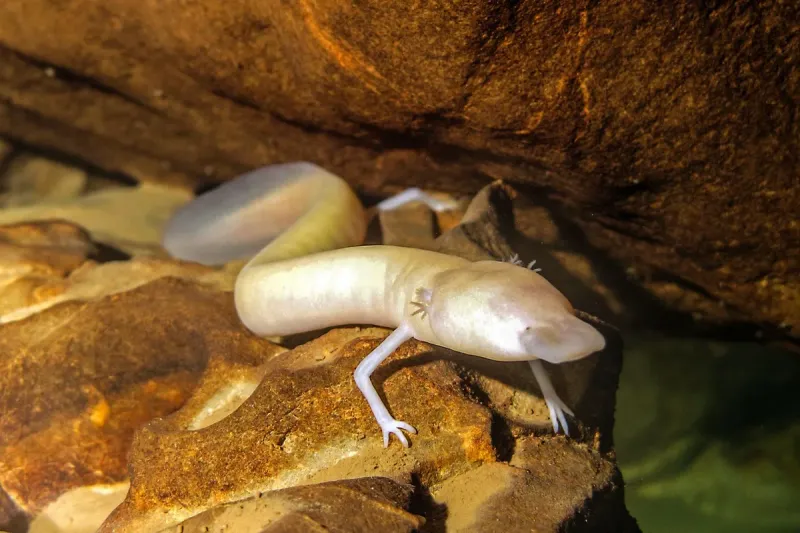
The Olm, also known as the “human fish,” is a fascinating creature found in the underground lakes of Europe. This pale, eyeless salamander has adapted to its cave environment through its elongated body and sensitive skin, enabling it to sense its surroundings without sight.
Living for over 100 years, the Olm’s longevity is astonishing for an amphibian. Its slow metabolism allows it to survive years without food, making it a perfect fit for the sparse resources available in caves.
Despite its ghostly appearance, the Olm is a remarkable example of evolution at work.
Blind Cavefish
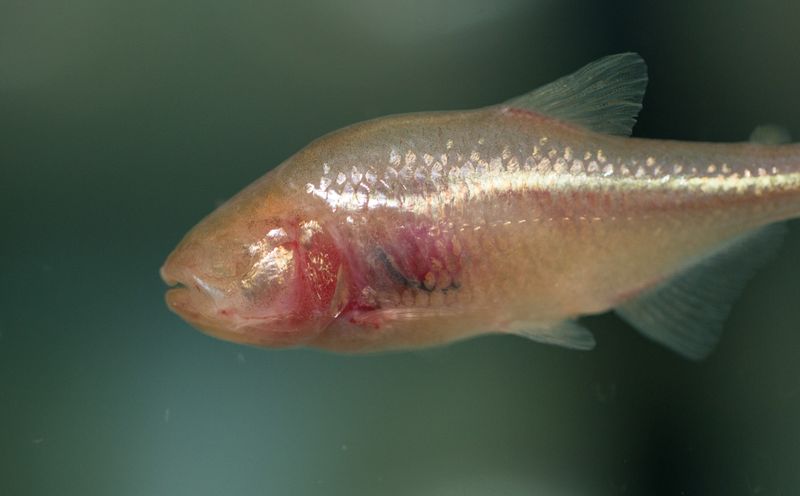
Blind Cavefish are small, eyeless fish that have evolved to thrive in the dark waters of underground caves. Their lack of vision is compensated by heightened senses of touch and smell, allowing them to navigate efficiently.
The absence of eyes is an energy-saving adaptation, crucial for survival in nutrient-poor environments. These fish often display interesting social behavior, swimming in schools to enhance their food-gathering efficiency.
Their unique physiology makes them a subject of scientific research, providing insights into evolutionary changes and adaptations to extreme conditions. Blind Cavefish exemplify how life can flourish in darkness.
Cave Swiftlet
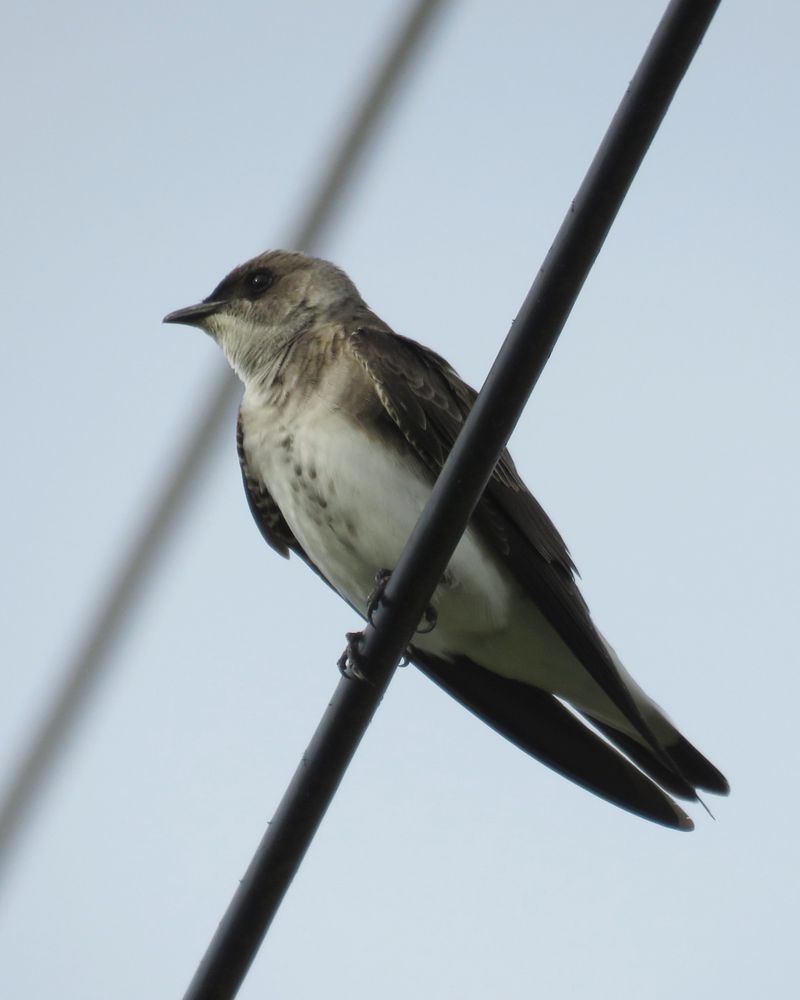
Cave Swiftlets are unique birds that have adapted to life in the dark interiors of caves. These small birds use echolocation, like bats, to navigate and hunt for insects. Their nests are made from saliva and attached to cave walls, a rare behavior among birds.
Swiftlets are known for their crucial role in the production of bird’s nest soup, a delicacy in some cultures. The ability to thrive in pitch-black conditions showcases their remarkable adaptability.
Cave Swiftlets highlight the diversity of life forms that can evolve specialized traits to survive in challenging environments.
Cave Glowworm
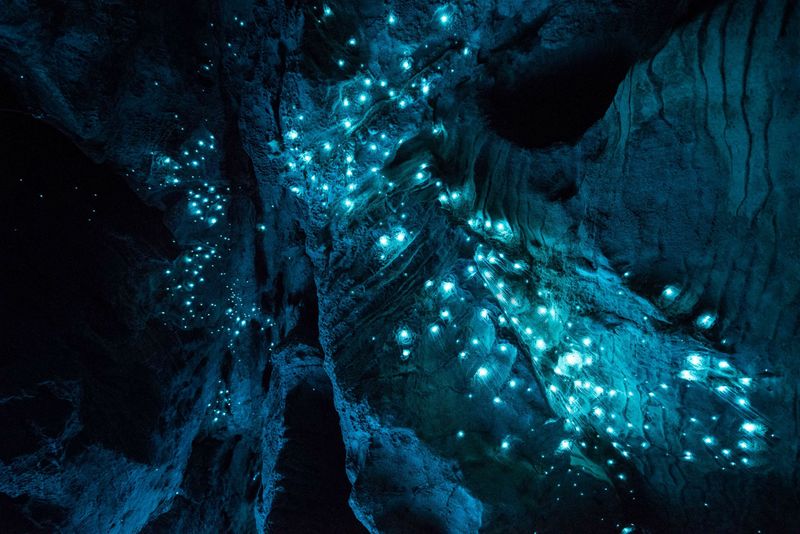
Cave Glowworms are enchanting insects that illuminate the dark caverns with their bioluminescent glow. Found predominantly in New Zealand, these glowworms use light to attract prey into their sticky silk threads.
The mesmerizing blue-green glow is a result of a chemical reaction in their bodies. These creatures transform caves into an otherworldly spectacle, drawing visitors from around the globe.
The glowworm’s lifecycle is intriguing, with a larval stage lasting several months before metamorphosing into an adult fly. Cave Glowworms are a testament to the unique adaptations that can arise in isolated, subterranean ecosystems.
Cave Isopod
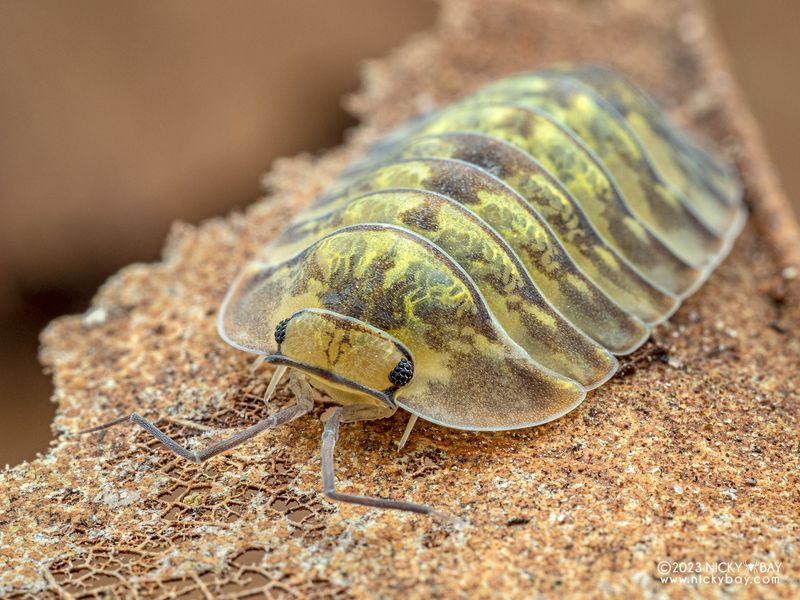
The cave isopod is a fascinating creature, adapted to the perpetual darkness of its underground home. These tiny, crustacean-like animals have a unique appearance, with a segmented, armored exoskeleton and delicate, almost translucent skin. Living in total darkness, they rely on touch and chemical cues rather than sight.
Despite their small size, cave isopods play a crucial role in the cave ecosystem. They feed on decaying organic matter, helping to recycle nutrients and support other life forms. Their presence indicates a healthy cave environment, making them essential to ecological studies.
Cave isopods are often found in damp, humid parts of caves, where their ability to retain moisture is vital for survival. They are a testament to the adaptability of life in some of the planet’s most extreme environments.
Cave Crayfish
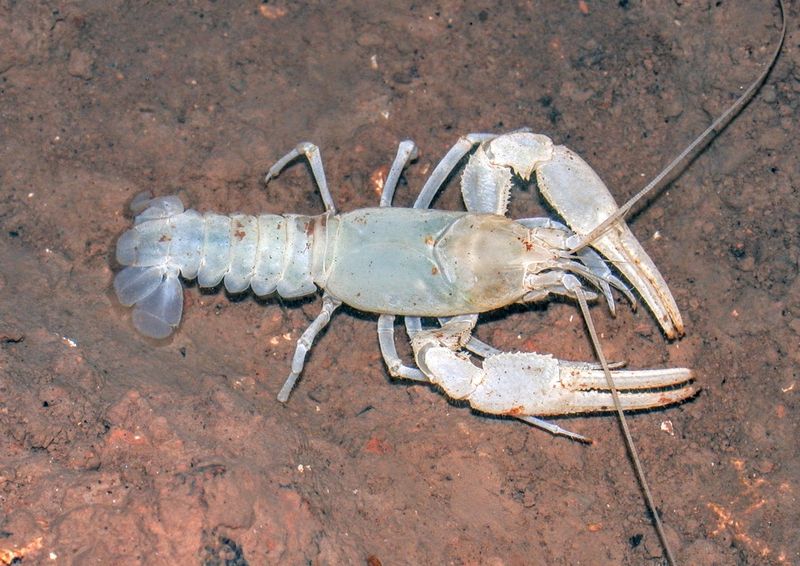
Cave Crayfish are unique crustaceans residing in the dark, water-filled caves of North America. These creatures are often pale and eyeless, a result of living in complete darkness.
Their long antennae help them navigate their rocky environments, sensing vibrations and movements around them. Cave Crayfish are an integral part of the cave ecosystem, playing a role in the food chain by feeding on detritus and other small organisms.
Their adaptations to life without light make them an interesting subject for evolutionary biologists. These crayfish highlight the diverse life forms that subterranean habitats can support.
Cave Spider
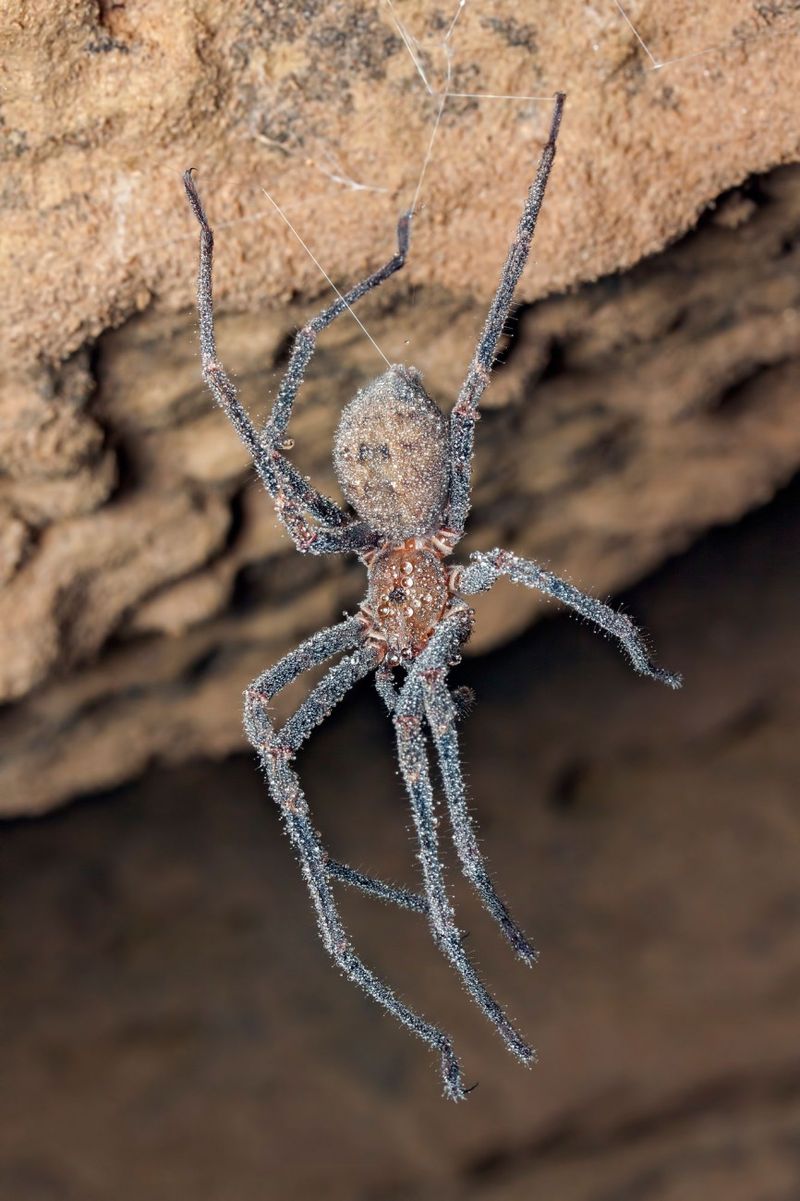
The Cave Spider is a master of darkness, spinning webs in the concealed corners of caves. These spiders have adapted to their lightless environment with long legs and sensitive hairs, allowing them to detect even the slightest movement.
Their webs are both habitat and hunting ground, capturing insects that venture into the caves. Cave Spiders are known for their patience, sometimes waiting weeks for prey to come their way.
Their ability to thrive in such a niche environment exemplifies the incredible adaptability of arthropods. Cave Spiders are a testament to survival in isolation.
Cave Snail
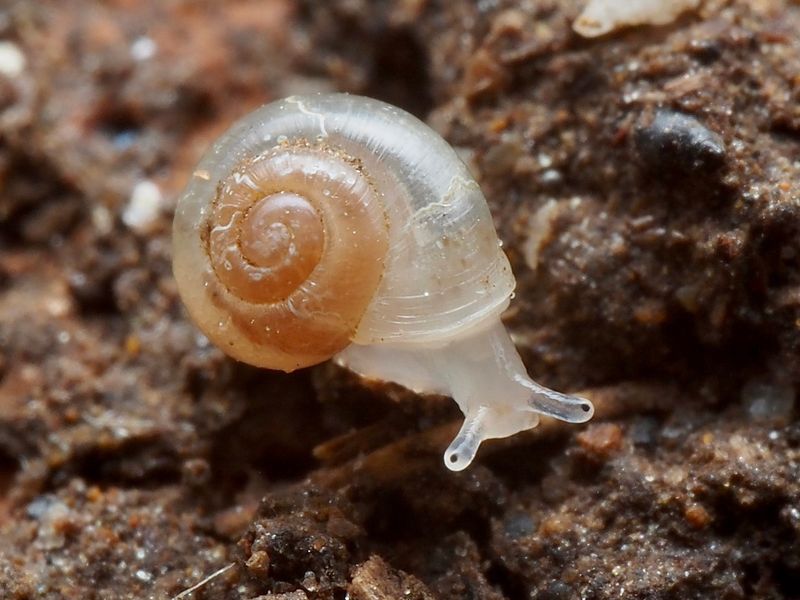
Cave Snails are fascinating mollusks that have adapted to the moist, dark environments of caves. These small, often translucent creatures glide slowly over wet surfaces, feeding on algae and bacteria.
Their shell provides protection in the harsh cave environment, while their slimy trail aids mobility across slippery surfaces. Cave Snails have developed unique adaptations, such as reduced vision, due to their dark habitat.
The simplicity of their existence belies the complexity of their ecological role, as they help recycle nutrients within the cave ecosystem. Their presence illustrates the delicate balance of cave life.
Cave Cricket
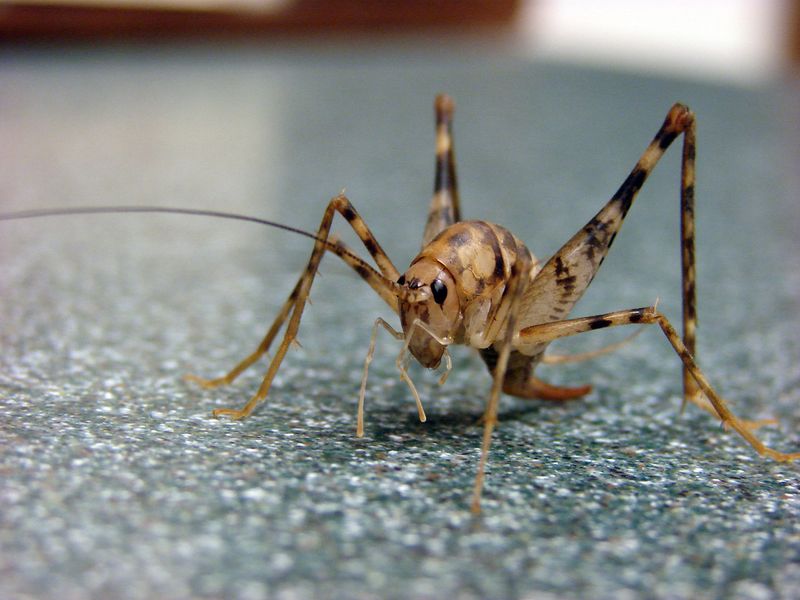
Cave Crickets are intriguing insects with long legs and antennae, perfectly adapted for life in the dark, rocky environments of caves. These nocturnal creatures rely on touch and sound to navigate and find food, often feeding on organic debris and small insects.
Their ability to jump great distances helps them escape predators and move efficiently through their habitat. Cave Crickets play an essential role in the cave ecosystem, aiding in the decomposition process.
Their presence in these hidden worlds showcases the adaptability and resilience of insects living in isolation.
Troglobitic Millipede
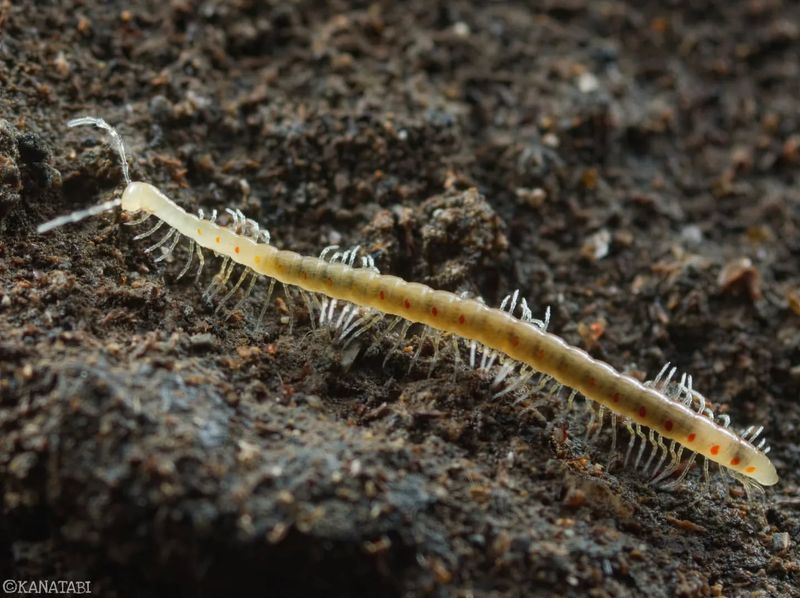
Troglobitic Millipedes are specialized arthropods adapted to the constant darkness of cave environments. These pale, often eyeless creatures have numerous legs that help them navigate the uneven terrain of cave floors.
Feeding on decaying organic matter, they play a crucial role in nutrient recycling within the cave ecosystem. Their slow, deliberate movements are a testament to their adaptation to a world without light.
Troglobitic Millipedes highlight the diversity of life that can evolve in isolation, developing unique traits to survive in the challenging conditions of subterranean habitats.
Cave Bat
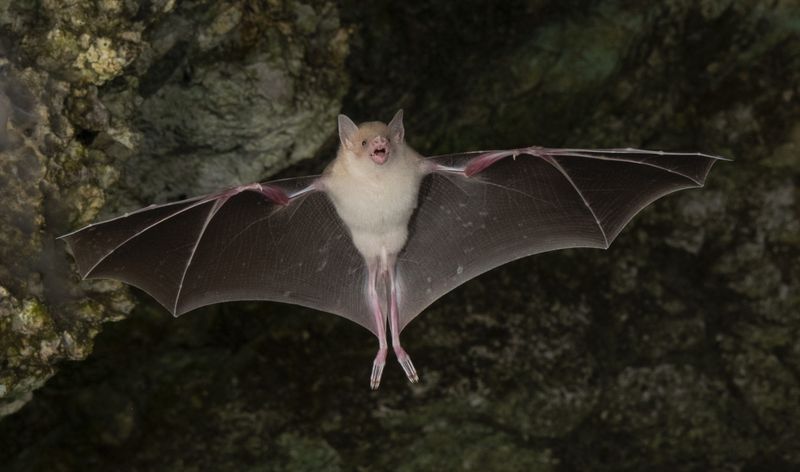
Cave Bats are remarkable mammals that have mastered the art of flying and hunting in complete darkness. Using echolocation, they emit high-frequency sounds that bounce off objects, allowing them to navigate and locate prey with precision.
These nocturnal creatures roost in large colonies, often sharing their cave habitats with other species. Cave Bats play a vital role in controlling insect populations, making them crucial for maintaining ecological balance.
Their unique adaptations to life in the dark underscore the diversity of evolutionary paths animals can take. Cave Bats truly embody survival in darkness.
Cave Beetle
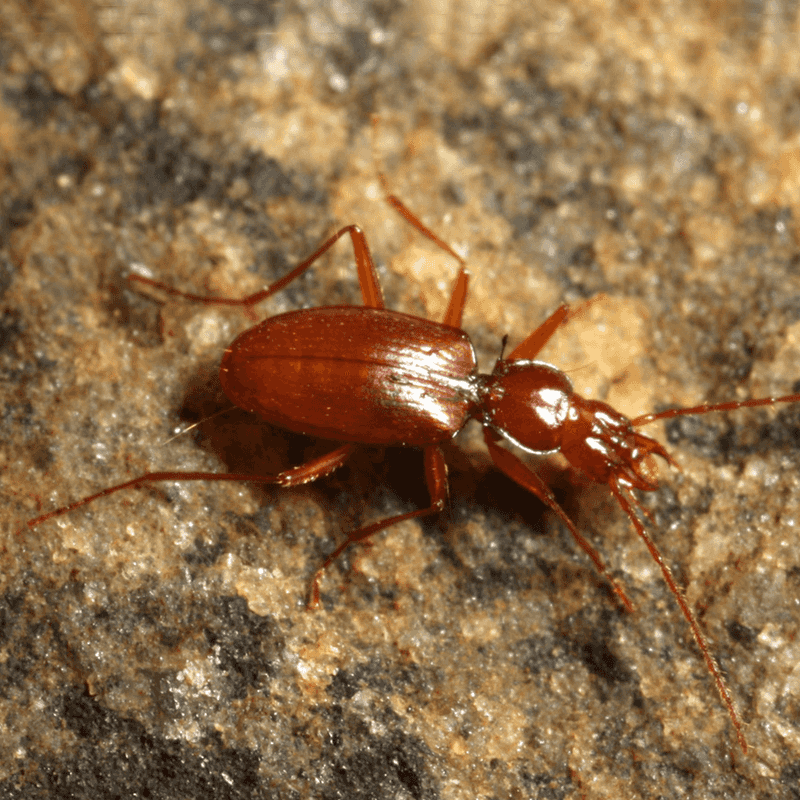
Cave Beetles are intriguing insects that have adapted to life in the perpetual darkness of caves. Often pale and lacking eyes, these beetles rely on other senses to find food and navigate their rocky habitats.
Their elongated legs are perfectly suited for traversing uneven surfaces, while their diet of detritus and small invertebrates keeps the cave ecosystem healthy.
Cave Beetles illustrate the remarkable adaptability of insects to extreme conditions, evolving unique traits to survive where few others can. They serve as reminders of nature’s ability to thrive in even the most isolated environments.
Cave Springtail
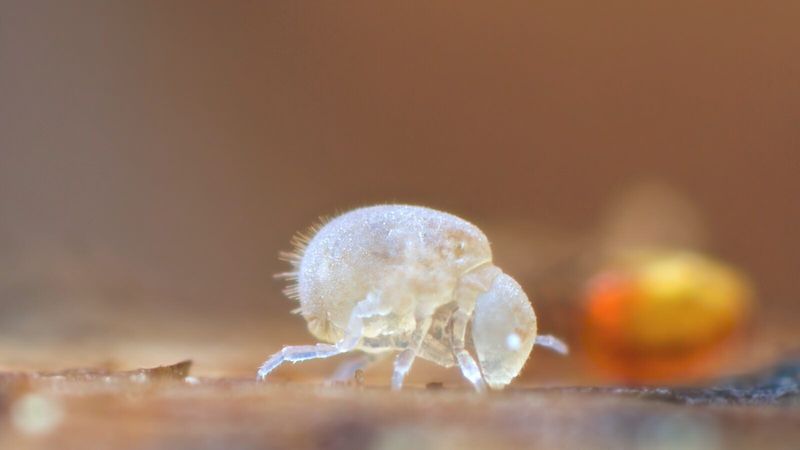
Cave springtails are among the smallest inhabitants of cave ecosystems, yet their role is disproportionately large. These tiny, wingless insects are equipped with long antennae, which they use to navigate the pitch-black environment. Their bodies are often devoid of color, a common trait among animals that have adapted to life without light.
Springtails are detritivores, meaning they feed on decomposing organic matter, fungi, and microbes, thus playing a critical role in nutrient cycling within caves. Their presence indicates a healthy ecosystem, as they contribute to breaking down organic material and supporting other life forms.
These creatures are incredibly resilient, capable of surviving in extreme conditions, including high humidity and low temperatures. Their adaptability and essential ecological role make them fascinating subjects of study for scientists interested in cave biodiversity.
Cave Eel
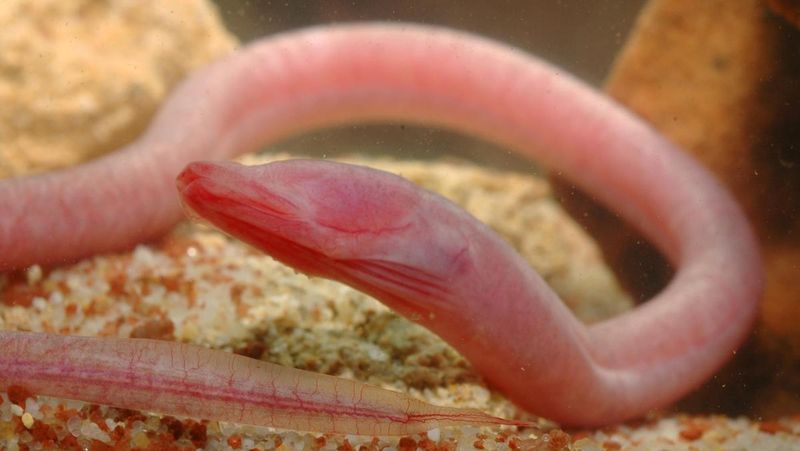
Cave Eels are mysterious creatures that thrive in the dark, underwater realms of caves. These elongated fish have adapted to their shadowy habitats with keen senses of smell and touch, compensating for their reduced eyesight.
Their streamlined bodies allow them to navigate swiftly through the water, hunting for small fish and invertebrates. Cave Eels play an important role in the cave food web, both as predators and prey.
Their unique adaptations illustrate the diverse evolutionary paths organisms can take to survive in isolated environments. Cave Eels are a symbol of adaptability in darkness.
Cave Gecko
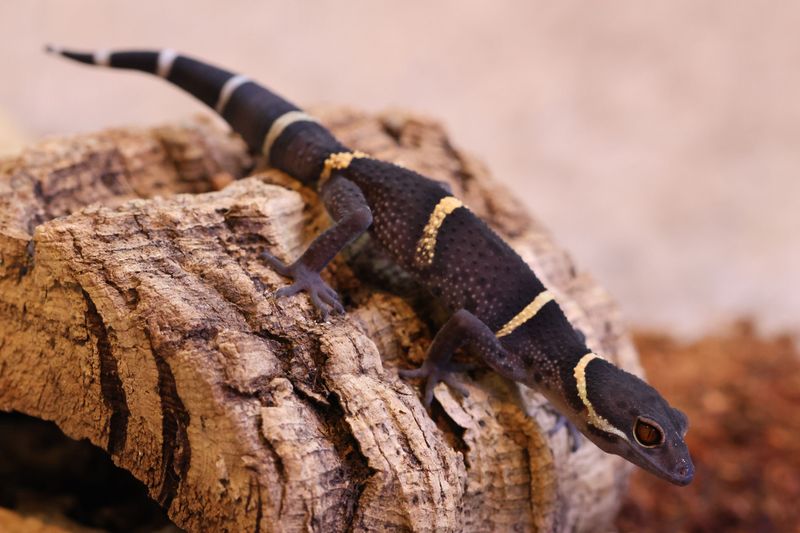
Cave Geckos are fascinating reptiles that have adapted to the dimly lit, humid environments of caves. These small, often pale creatures have developed specialized toe pads that allow them to cling effortlessly to cave walls.
Their diet consists mainly of insects, which they hunt with precision using their keen sense of smell. Cave Geckos showcase the remarkable adaptability of reptiles to diverse habitats, evolving unique traits to thrive in isolation.
Their presence in caves underscores the complexity and diversity of life that can flourish in such secluded environments. Cave Geckos are true masters of adaptation.
Cave Harvestman
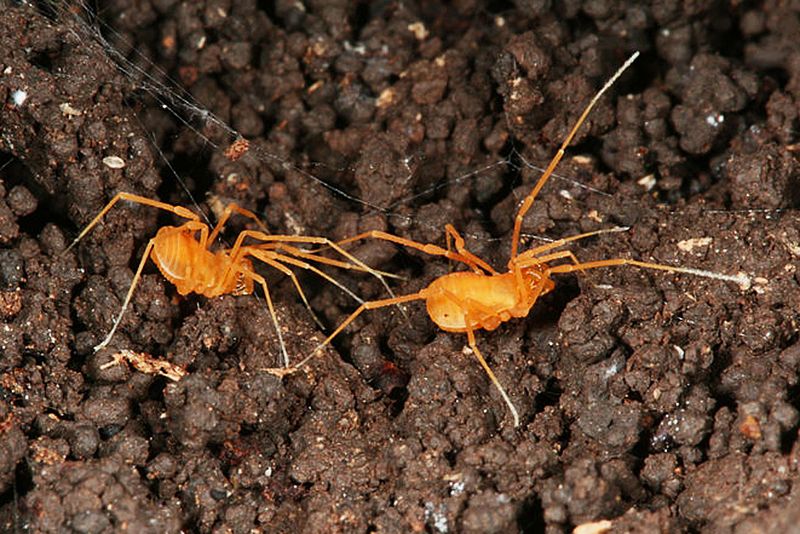
Cave harvestmen, also known as daddy longlegs, are a common sight in many cave systems. These arachnids are notable for their extremely long, spindly legs and small, compact bodies. Their legs are equipped with sensory hairs, allowing them to detect minute vibrations and navigate the dark cave environment.
Unlike spiders, cave harvestmen do not produce silk or spin webs. Instead, they rely on their long legs to capture prey, which typically includes small insects and other arthropods. Their diet helps control the population of other cave-dwelling species, maintaining ecological balance.
Cave harvestmen are often found in areas with high humidity, which helps them avoid desiccation. They are uniquely adapted to survive in caves, showcasing the diverse strategies employed by organisms to thrive in such extreme habitats.
Cave Shrimp
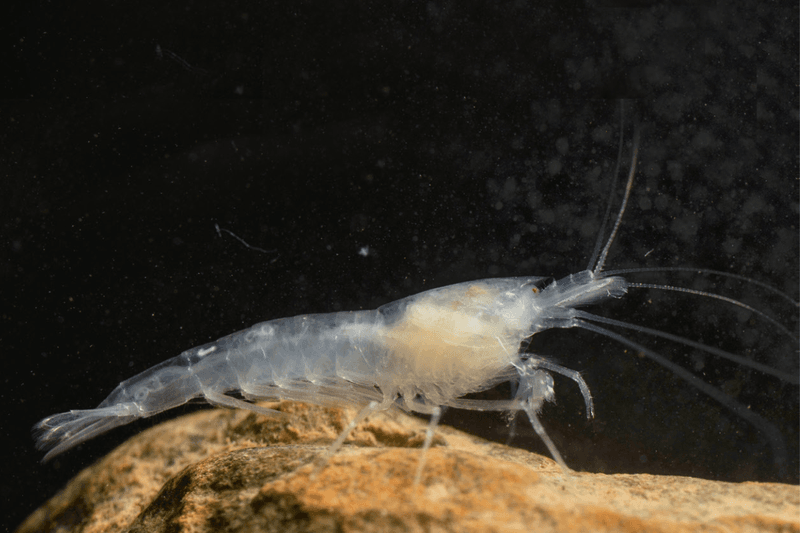
Cave Shrimp are delicate crustaceans that inhabit the cool, dark waters of subterranean pools. These translucent creatures have adapted to their environments by developing long antennae, which help them sense their surroundings in the absence of light.
Their diet consists of detritus and microorganisms, contributing to nutrient cycling in their ecosystems. Cave Shrimp highlight the diversity of life forms that can evolve in isolation, developing unique traits to survive in challenging conditions.
These shrimp exemplify the adaptability required to thrive in the hidden, mysterious worlds of caves.
Cave Centipede
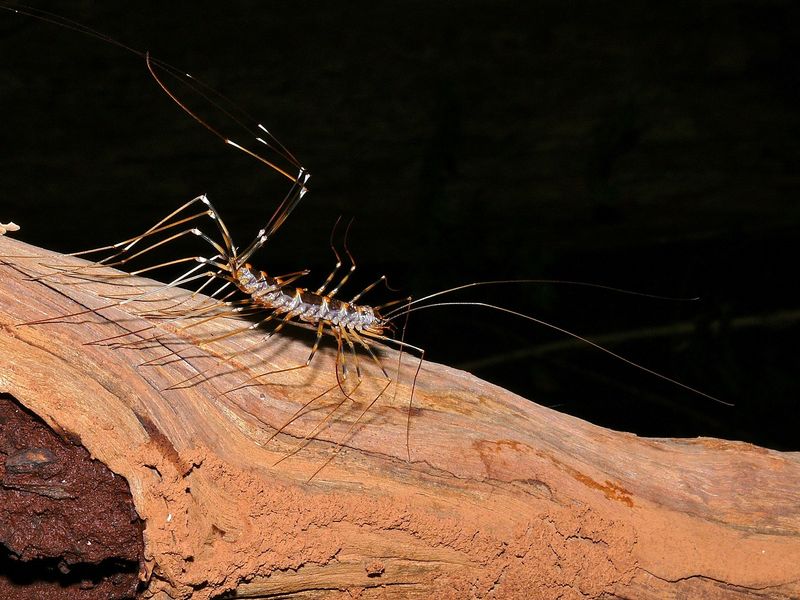
Cave Centipedes are predatory arthropods that thrive in the shadowy depths of caves. Equipped with numerous legs, these creatures move swiftly across rocky surfaces, hunting for insects and other small prey.
Their elongated bodies and sensitive antennae are perfect for navigating the uneven terrain of caves. Cave Centipedes play a crucial role in controlling insect populations within their habitats, maintaining ecological balance.
Their unique adaptations illustrate the diverse strategies life employs to survive in isolation. Cave Centipedes are a testament to the resilience and adaptability of subterranean organisms.
Cave Brachyura
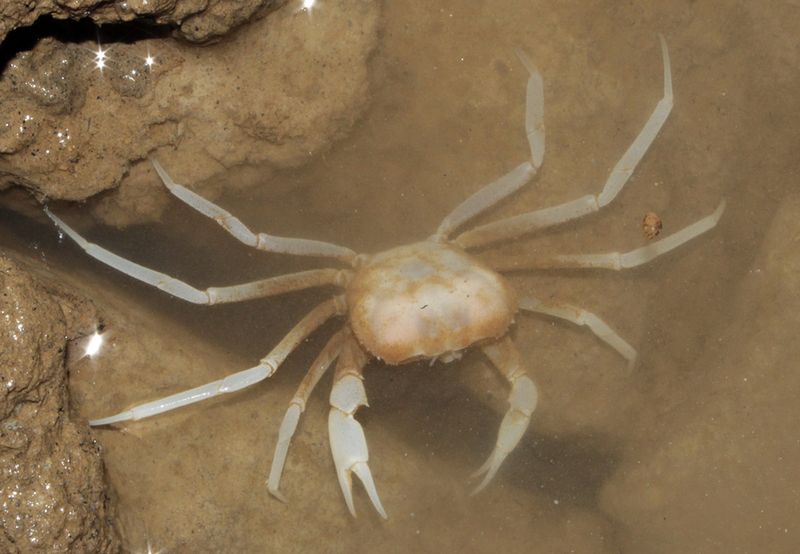
Cave brachyura, or cave-dwelling crabs, are specialized crustaceans that have adapted to life in the darkness. These crabs have minimal pigmentation and often reduced vision, relying on touch and chemical senses to interact with their environment.
Their flattened bodies enable them to squeeze through narrow crevices while searching for food. They feed on organic matter and small organisms, contributing to the cave’s nutrient cycle. Cave brachyura play a vital role in maintaining ecological balance within their habitat.
Their adaptability to changing conditions is noteworthy. Even in the low-energy environment of caves, they efficiently manage their resources, ensuring long-term survival. These crabs exemplify nature’s ability to thrive in unexpected places.
Cave Scorpion
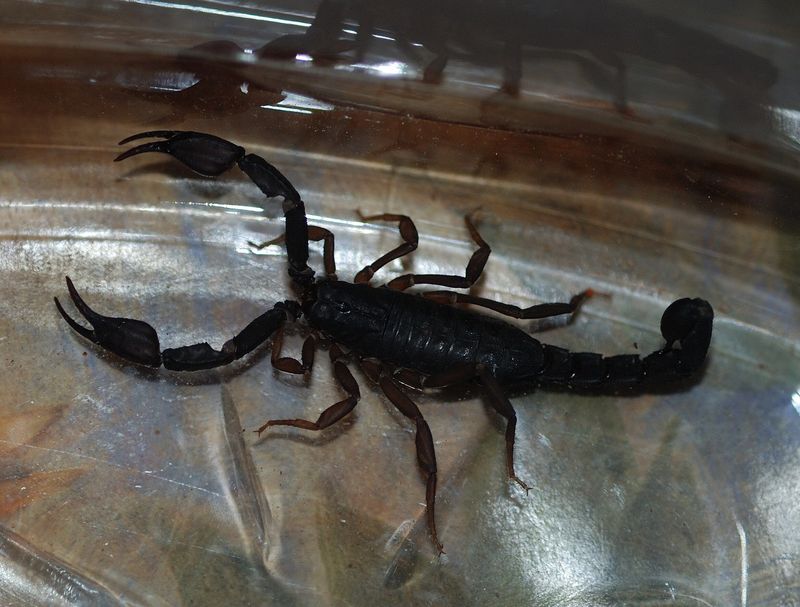
Cave Scorpions are mysterious arachnids that dwell in the dark recesses of caves. These pale creatures have adapted to their shadowy environments with elongated pincers and tails, aiding in hunting and defense.
Their diet consists of insects and small invertebrates, playing a role in the cave food web. Cave Scorpions highlight the remarkable adaptability of arachnids to diverse habitats, evolving unique traits to survive in isolation.
Despite their fearsome appearance, they are vital components of their ecosystems, contributing to the balance of life within caves. Cave Scorpions are a symbol of survival in darkness.
Cave Onychophoran
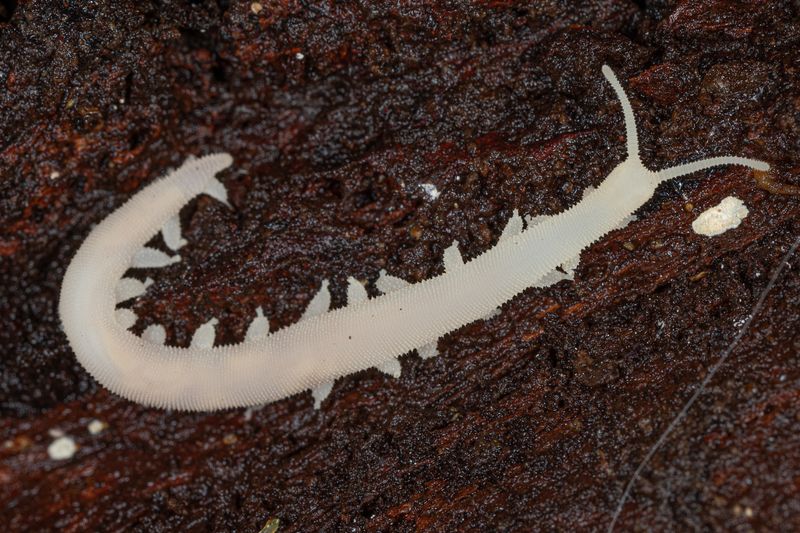
Cave onychophorans, commonly known as velvet worms, are fascinating invertebrates that thrive in humid cave environments. They possess velvet-like skin which aids in moisture retention. These nocturnal creatures are predators, capturing prey with a sticky slime they eject from their appendages.
The velvet worm’s hunting technique is quite remarkable. They use their slime to immobilize prey before consuming it. Their unique locomotion, involving the use of numerous tiny legs, allows them to navigate the uneven cave terrain with ease.
Despite their ancient lineage dating back over 500 million years, cave onychophorans continue to captivate scientists. Their unique adaptations to cave life offer valuable insights into evolutionary processes.
Cave Amphipod
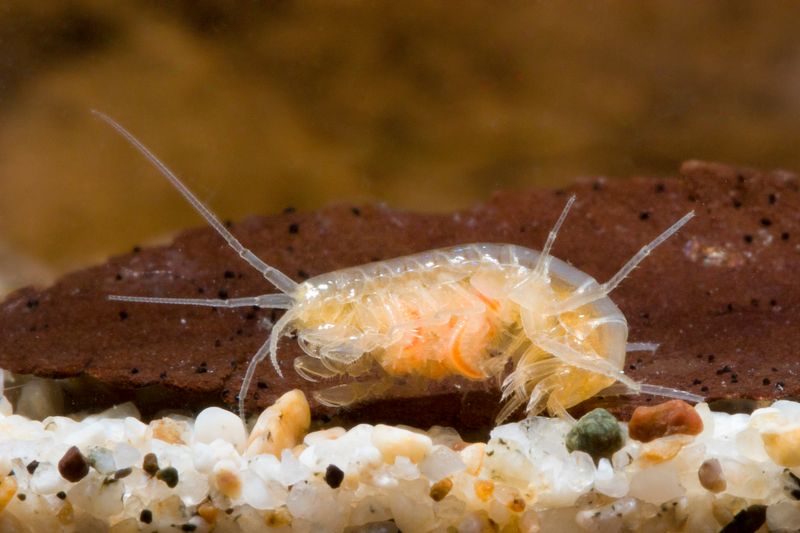
Cave Amphipods are intriguing crustaceans that thrive in the dark, underwater environments of caves. These small, often translucent creatures have adapted to their habitats with long antennae that aid in navigation and finding food.
Their diet consists of detritus and microorganisms, playing a crucial role in nutrient cycling within their ecosystems. Cave Amphipods highlight the remarkable adaptability of crustaceans to extreme conditions, evolving unique traits to survive in isolation.
Their presence in caves underscores the complexity and diversity of life that can flourish in such secluded environments. Cave Amphipods are true masters of adaptation.

